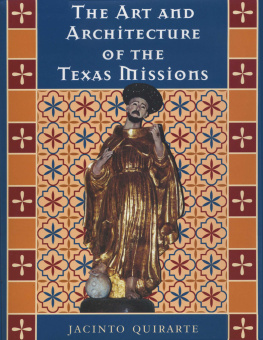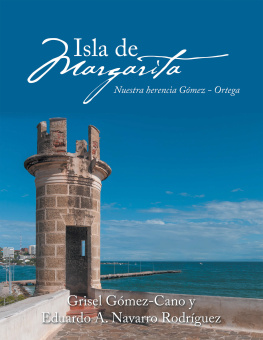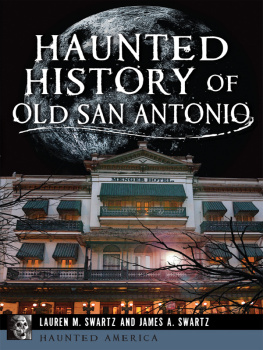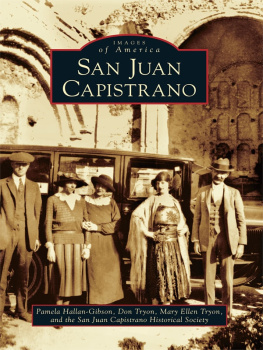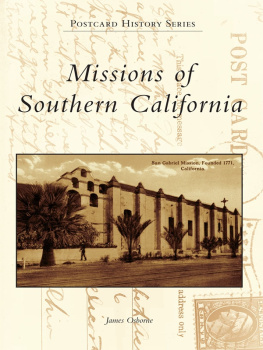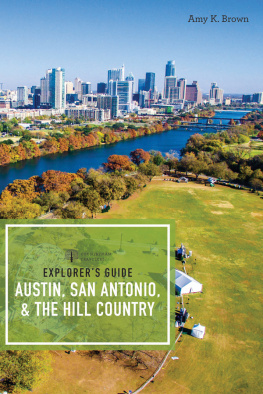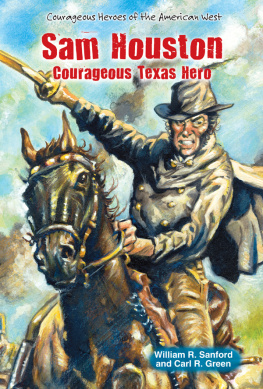NUMBER SIX
Jack and Doris Smothers Series in Texas History, Life, and Culture
THE ART AND ARCHITECTURE OF THE TEXAS MISSIONS
JACINTO QUIRARTE

UNIVERSITY OF TEXAS PRESS
Austin
Publication of this work was made possible in part by support from the J. E. Smothers, Sr., Memorial Foundation and the National Endowment for the Humanities.
Copyright 2002 by the University of Texas Press
All rights reserved
First edition, 2002
Requests for permission to reproduce material from this work should be sent to Permissions, University of Texas Press, Box 7819, Austin, TX 78713-7819.
LIBRARY OF CONGRESS CATALOGING-IN-PUBLICATION DATA
Quirarte, Jacinto, 1931
The art and architecture of the Texas missions / Jacinto Quirarte.
p. cm. (Jack and Doris Smothers series in Texas history, life, and culture ; no. 6)
Includes bibliographical references and index.
ISBN 0-292-76902-4
1. Spanish mission buildingsTexasHistory 2. Architecture, Spanish colonialTexas. 3. Art, Spanish colonialTexas. 4. MissionsTexasHistory. I. Title. II. Series.
NA5230.T4 Q57 2002
726.5'09764'09033dc21
2001003848
ISBN 978-0-292-70208-0 (library e-book)
ISBN 978-0-292-78782-7 (individual e-book)
DOI 10.7560/769021
DEDICATED TO MY WIFE,
Sara Quirarte,
who never failed to provide moral support and encouragement during the many years that it took to complete this book,
AND
to the memory of my mother, Frutosa Quirarte, and my brother, Frank Quirarte
PREFACE
This book grew out of an earlier research project on the decorative and applied arts at the four San Antonio missions which comprise the San Antonio Missions National Historical Park: Nuestra Seora de la Pursima Concepcin de Acua, San Jos y San Miguel de Aguayo, San Juan Capistrano, and San Francisco de la Espada. I directed the project, funded by the national historical park, and carried it out from September 15, 1981, to May 31, 1982, with the assistance of consultants and the staff of the Research Center for the Arts, the University of Texas at San Antonio (UTSA).
Most of the work on the research plan was done by Anne Schlosser, a research assistant with the center. The archival work on the project (research, transcriptions, and translations) was done by Donna Pierce in San Antonio and Mexico City. She prepared translations of texts relating to the decorative and applied arts of the San Antonio missions (except San Antonio de Valero) taken from the inventories by Fr. Dolores (1762), Fr. Senz (1772), Fr. Lpez (1785), and Fr. Daz (1824). The translations are now in my possession since the center was defunded by the university a few years ago and no longer exists. These files and other research center files will probably be deposited in the Special Collections of the University of Texas at San Antonio Library (preliminary discussions are underway). Most of the photography was done by Kathy Vargas, a research assistant with the center.
Donna Pierce and Kathy Vargas did on-site research to check out details and to determine what had to be photographed. As project director, I also did on-site research, as did the late Robert Mullen, who was a faculty associate at the research center. Harvey Smith, Jr., provided photographs and newspaper clippings from his own collection and information on the restoration work carried out by his father, himself, and others at the missions. Mardith Schuetz-Miller provided research materials on the paintings found by Carlos Castaeda in the 1930s. Their assistance and expert advice was of inestimable value. Lorene Pouncey worked on the bibliography, Flix Almarz on the history of the missions, and Nod MacMillan on archival materials related to the missions. Marlys Bush Thurber, our liaison with the national historical park, offered guidance during the nine months when the project was carried out.
I wrote the preliminary report and asked members of the research team for their comments. Written responses by Harvey Smith, Jr., and Donna Pierce were very valuable in the preparation of the final report, which was submitted to the San Antonio Missions National Historical Park on August 10, 1982. All drafts and the final report were typed by Margaret Rogers, Graciela Rodrguez, and Mara Elena Gonzlez-Cid.
The excitement generated by the results of the project led me to work on the present book, which encompasses a much broader body of material. The scope of the project was enlarged to include all the missions of Texas and to focus on the historical context as well as a formal and iconographic analysis of the art and architecture of the Texas missions.
In the late 1980s and early 1990s I reviewed primary and secondary sources on the missions to gather the necessary information for the expanded project. Part of the work involved going back to the archives (aside from those reviewed by Donna Pierce) to determine exactly what they contain relative to the art and architecture of the missions. The intent was to get a sense of what the missions were like from the 1740s to the early 1820s. This included the church and sacristy furnishings, sacred items, and the religious images (sculptures and paintings) of the altarpieces as they appeared during this period.
I am indebted to a number of people who helped me gather the many photographs, drawings, and prints of the Texas missions. Photographer Sarah Pierce from the University of Texas at San Antonio made black and white prints from negatives of pictures I took of the Espritu Santo Mission as well as other pictures taken of the San Antonio missions by Kathy Vargas during the initial project. Other photographers include Csar Martnez, a special consultant, who did exterior views of the San Antonio missions; Tim Summa, who did interior views of the San Jos mission church; Linton Tyler, who made black and white prints from the negatives of pictures taken by Kathy Vargas; and John Poindexter and Mark McClendon, who scanned images from old prints and negatives. Dennis Medina, Special Collections librarian of the University of Texas at San Antonio Library, provided nineteenth-century lithographs of the missions. Tom Palmer did the map of New Spain (based on a map I had done) and the plan of Espritu Santo Mission, and I did the map of the Texas province (based partly on a map by Desire McDaniel).
I am also indebted to the following people, who gave their permission to reproduce images of the missions: Eugene George for his elevations of San Antonio de Valero and San Francisco de la Espada, Jack Eaton for his plans and elevations of San Antonio de Valero, Mardith Schuetz-Miller for her drawings of the Valero facade, Rebecca Huffstuttler for the old photographs and drawings in the collection of the Witte Museum of San Antonio, and Martha Utterback for photographs in the collection of the Daughters of the Republic of Texas Library.
Finally, I am indebted to the staff of the research center and to the consultants who assisted us in carrying out the initial research project. This book would not have been possible without their assistance.
J.Q.
INTRODUCTION
This is a study of the art and architecture of the missions founded in Texas by Franciscan missionaries in the seventeenth and eighteenth centuries. A formal and iconographic analysis of the extant churches and related buildings, their decorated surfaces, and the reconstructed altars with their religious images will allow us to determine their meaning and their value as art and architecture. A discussion of the sources and antecedents for the missions found in central and northern New Spain will permit us to place them within a broader historical and artistic context.
Next page
